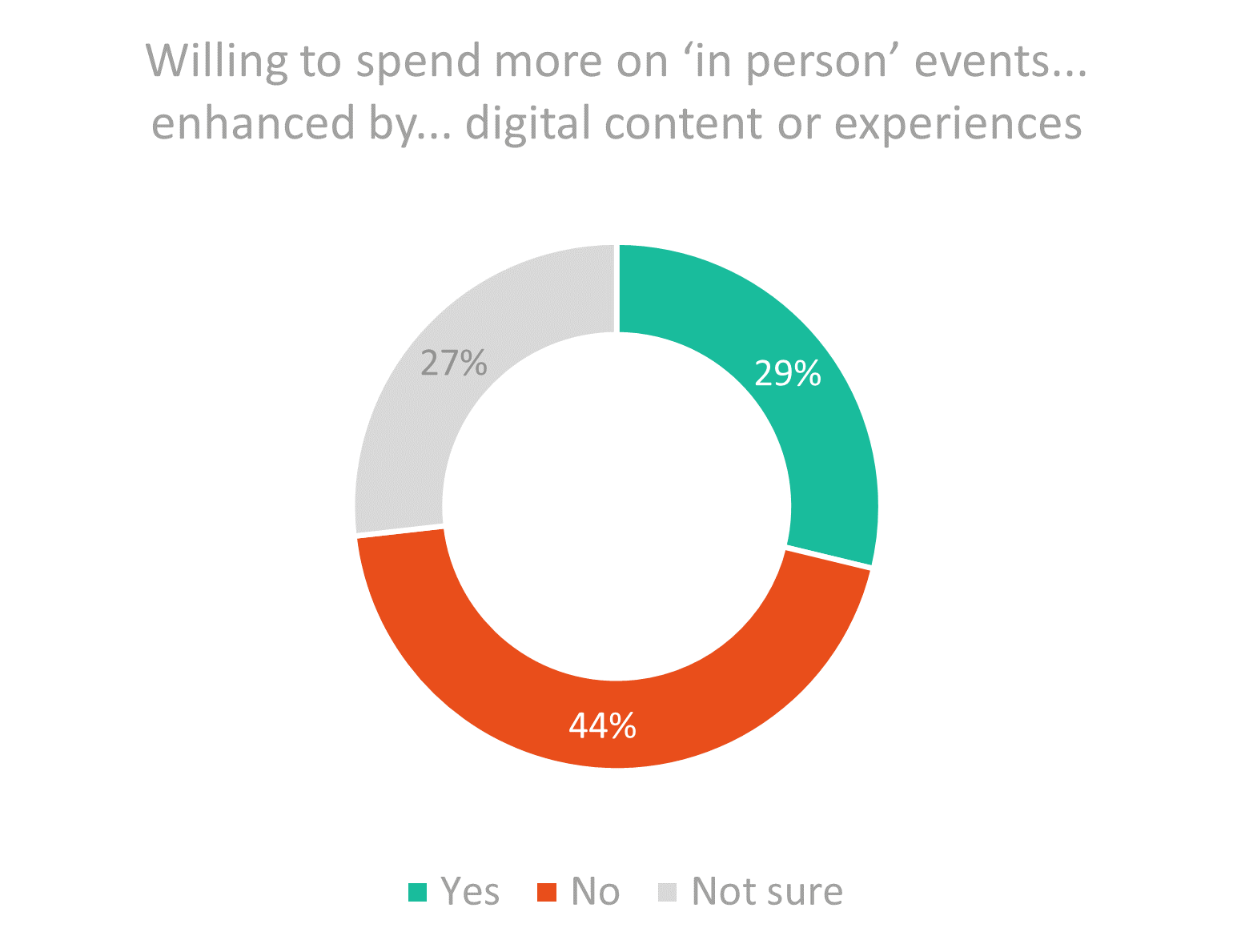Indications Audience Behaviours May Change After the Pandemic
July 2021
This research is from The Audience Agency's nationwide longitudinal (ongoing) panel survey of changing views about participating in creative and cultural activities through the recent and ongoing crises, and beyond, the Cultural Participation Monitor.
Contents
Themes
There are already indications that audience behaviour will be different in the 'new-normal' after the pandemic, particularly in relation to more local attendance, greater digital engagement (alongside, and in some cases replacing, live attendance) and openness to changes in event formats from significant minorities of the population (e.g. through blended digital and live events).
More Local Attendance

Substantial minorities of respondents agreed that they would look to change their arts and cultural engagement after the pandemic, in various ways. For example, 33-40% agreed or agreed strongly that they would stay more local to attend various types of arts and culture.
This varied from a net of 8/9% agreeing for live events and indoor galleries and museums (perhaps because of a combination of less local availability and more specialised content) to 16% for Outdoor parks, gardens and heritage spaces and 23% for Film. This suggests that, all things being equal, there is a desire to shift to more local engagement.
Greater Digital Engagement

Similarly, of those who were interested in differing types of online activity over the next couple of months, there were substantial proportions who would use it to replace some, or most, of their in-person engagement, even after COVID-19 had gone away [2]. This suggests that there will be some displacement of physical to digital engagement, among digitally engaged audiences (although these aren’t large proportions of the whole audience).
Openness to Changes in Format

Audiences may change their behaviour digitally in other ways. Combinations of digital and physical engagement look to be important in the future. 40% Agreed that “I am interested in experiencing my preferred types of arts and culture BOTH online AND in person” (11% Strongly agreed). There is openness to digital enhancement of the live experience, as well: 36% Agreed (and 9% Strongly) that “I am interested in how digital could be used to enhance a physical visit to a museum or gallery”, and similar numbers (35% and 9%) for performing arts events. Encouragingly, there were substantial numbers who said that they would also spend more for physical events which are enhanced by digital activity (29% replying Yes, 27% Not sure) [3]. There was further appetite for digital interactivity that affected performances and the core content of cultural experiences, with 9% “Very interested” in the first two of the following options and 11% for the third (totals for “quite interested” and “very interested” are shown in brackets):
- Live events that include digital interactivity during the performance (e.g. interact with performers, other people in the audience, or to change parts of the performance) (33%)
- A virtual reality experience that includes interactions with other participants (29%)
- A virtual reality experience that you can explore on your own (35%).
Between these various types of change, there is considerable potential for engagement patterns after the pandemic to be different from what went before, whether by location, platform or format.
------------------------------------------------------------------------------------------------------------------------------------
[2] “When there is no threat of Covid-19, will you do online arts and cultural activity…?” [Answers: “Instead of most physical visits”; “Instead of some physical visits”; “As well as physical visits”].
[3] The question wording was: “Overall, would you be willing to spend more on ‘in person’ events that were enhanced by these types of digital content or experiences?” Examples previously listed included: exclusive 'teaser' content in the build-up to the event; exclusive interviews with the artists or performers; extra artistic content; 'behind the scenes' footage; online discussion with other audience members or attenders; recommendations from artists or performers for other events.
------------------------------------------------------------------------------------------------------------------------------------
Other findings from Wave 3 | Jul 2021 | Wellbeing, future attendance
-
Wellbeing has Taken a Serious Blow, but Arts can Help
Wellbeing has taken a serious blow across the population, although many say that arts do help increase wellbeing.
-
Audiences are Proving Slow to Return
Audiences are proving slow to want to return, with a continuing sense of risk to health and only slow rises in engagement.
